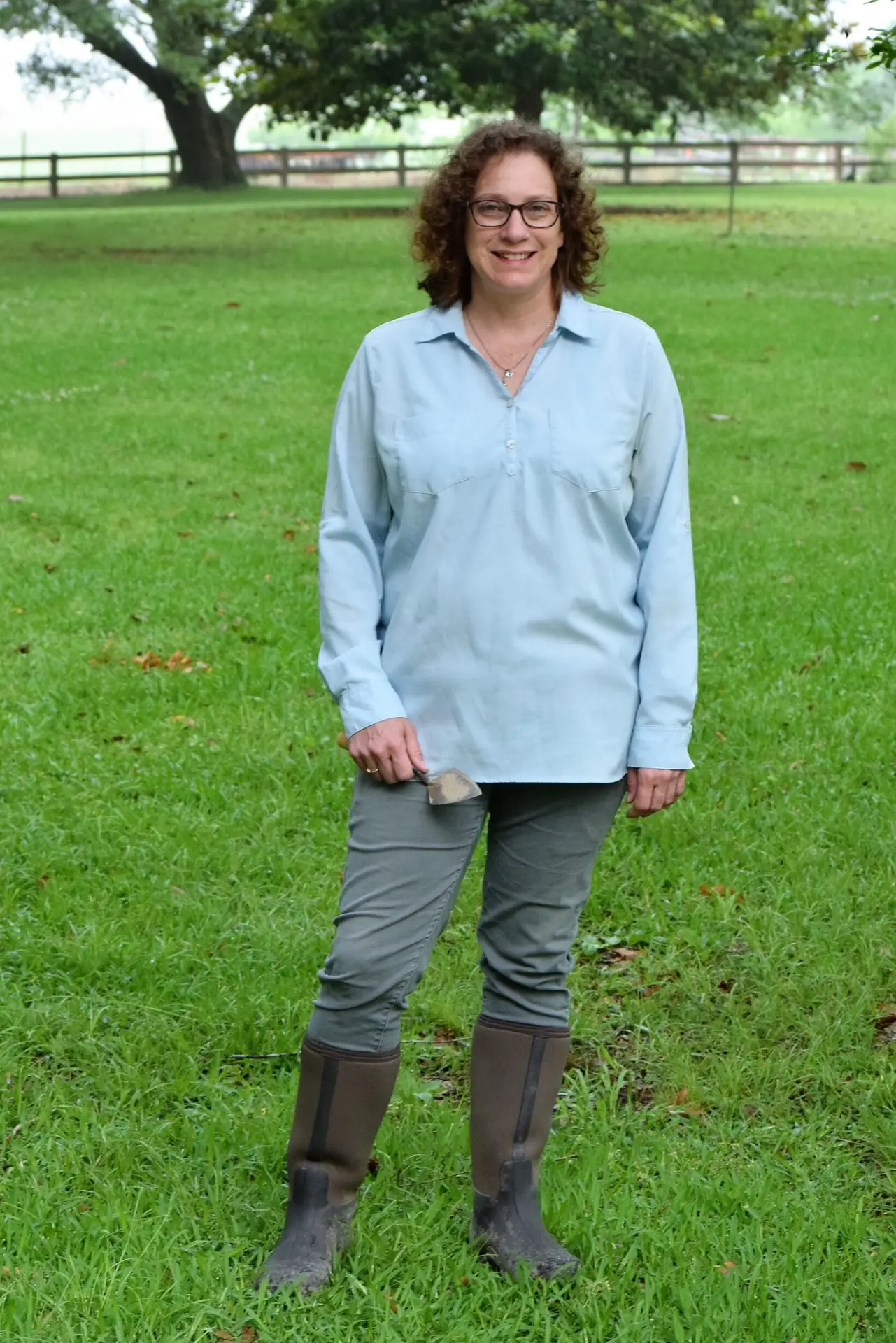Raised in a middle-income family in Fairhope, Dr. Ashley Dumas felt compelled to pursue a college degree that would guarantee a stable job and career. However, after getting a sample of archaeology under Dr. Gregory Waselkof while at the University of South Alabama, she heeded the advice of her aunt, a high school guidance counselor, who suggested she pursue her passion and things would work out. As a result, she obtained a degree in anthropology and French from USA, then went on to the University of Alabama to earn both her master’s and doctorate in anthropology. In 2009 she was hired at the University of West Alabama in Livingston to help with the school’s Center for Study of the Black Belt, but her duties expanded to include the studies of the late prehistory and history of the Southeastern United States. She is also the director of the UWA-owned Fort Tombecbe Archaeological site, a French and later Spanish and English outpost on the Tombigbee River.

A few years ago, a Dumas-led archaeological team in west Alabama unexpectedly found European-made artifacts dating to the time of the Spanish explorer Hernando De Soto’s expedition in the Southeast United States around 1540. The discovery also suggests that the excavation site could be in the vicinity of Mabila, a fortified Indian village during which forces of De Soto and Chief Tascalusa engaged in an epic battle. A reported 2,500 Indians died in the engagement and while the Spanish losses in men were few, the battle essentially derailed the gold-searching expedition, and injuries suffered by De Soto resulted in his later death.
Historians and archaeologists have primarily relied on three journals written by those on the expedition and another based on interviews to retrace De Soto’s path from Florida through the Southeast U.S. Despite that, Mabila has never been found and suspected locations vary over a wide area of west and southwest Alabama. – Jim Plott
Your archaeological excavations uncovered Spanish artifacts dating back to the time of the De Soto Expedition in the 1540s. Is that an indication you might have discovered Mabila?
We don’t have the battle site of Mabila, but we have found what we think is the chiefdom of Tascalusa so that is important to distinguish. We believe we have a 16th-century chiefdom in the location that matches the 16th-century Spanish chronicles. But we are still looking for Mabila.
What types of artifacts have you uncovered?
We have found a lot of 16th-century native pottery (based on the way it is made and decorated). The location of this pottery tells us we have several clusters of farms within shouting distance of one another.
We also now have over 100 pieces of 16th-century European objects. We have fragments of late medieval horseshoes, iron celts or chisels that were probably used as trade items and fragments of brass candlesticks. All the objects are really obvious in the way they are made that they are from that period. Finding 16th-century metal was a huge surprise, but it has fallen into line with the belief that we have the chiefdom.
What is significant about Mabila and the battle?
The Battle of Mabila was a turning point in the colonization of eastern North America. It was the beginning of the end for the De Soto expedition. De Soto believed he could conquer this area as the Inca (in South America) had been conquered. But by the time he made it to present-day Alabama he had little to show in terms of the mineral wealth he was seeking. He had not been able to pacify the indigenous people as he intended. It sounds hyperbole, but if they had succeeded some people think we would all be speaking Spanish today.
You have said that Mabila is as important as Jamestown and St. Augustine. How important would it be in terms of Alabama and American history to find the Mabila?
It would be critically important. It would be considered a sacred site for native peoples even though it was (a victory that took a devastating toll). The Spanish won the battle, but they lost the war because of the fierce resistance. It is a legendary place in Alabama history, and it just makes for a good story. The expedition lost basically all their supplies in the fire that consumed the town. So the expedition was struggling after that. They were not able to conquer this region, and as a result there were no other substantial attempts by Europeans to settle in what is now North America for another 150 years.
What little known fact about Alabama’s early inhabitants do you think is important for people to know?
I think it is important that people understand that Indians of this period were not simplistic. They had complex social and political lives and religious beliefs. On the other hand, they were farmers and probably had the same concern about crops of farmers today. They were not monolithic; they were diverse. There were multiple ethnicities and multiple languages spoken across the Southeast and Alabama.




